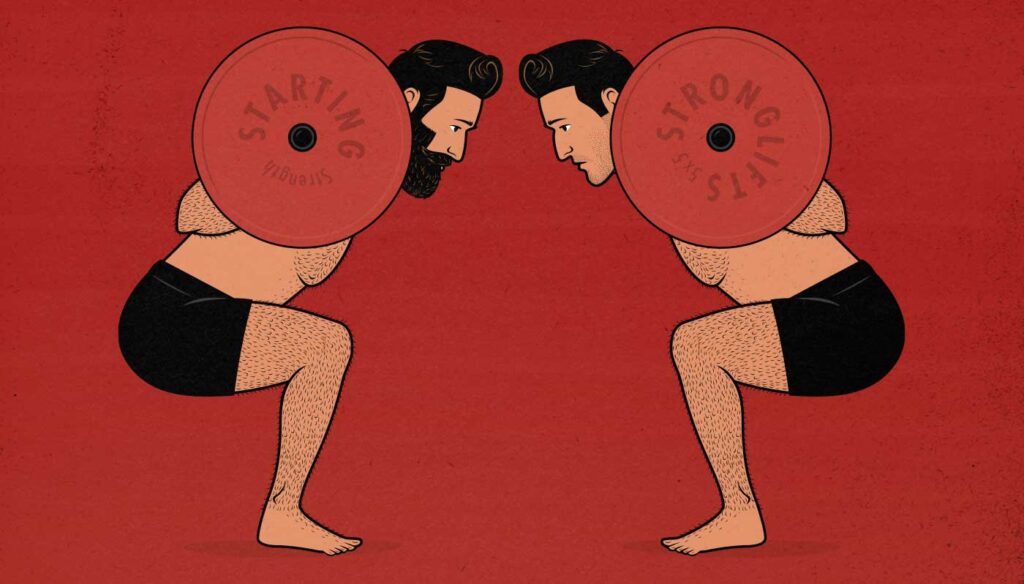
Starting Strength vs StrongLifts 5×5: What’s the Difference?
What’s the difference between Starting Strength and StrongLifts 5×5? Which workout program is better for beginners, which is better for building muscle, and which is better overall?
There are a few key differences between Starting Strength and StrongLifts. The first is the volume. Starting Strength uses 3 sets of 5 repetitions (3×5) as its main set and rep scheme, whereas StrongLifts uses 5 sets of 5 repetitions (5×5), giving it a much higher training volume. In theory, that should make it better for building muscle, but does it?
Another difference is that Starting Strength uses power cleans to develop power, whereas StrongLifts uses barbell rows to build the back. Again, this seems to favour StrongLifts for building muscle, especially in the upper body, but is that true?
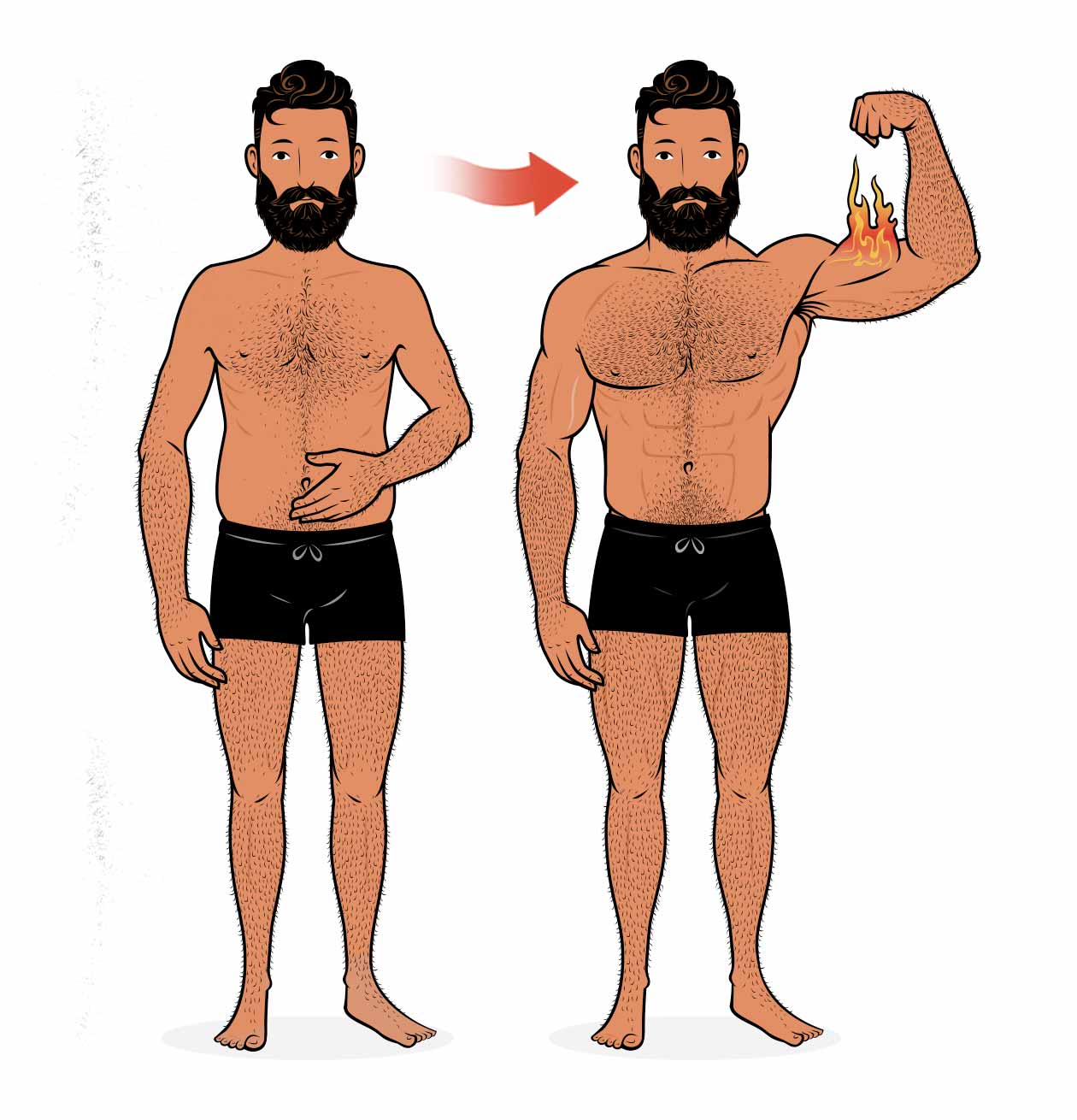
What is Starting Strength?
Starting Strength is a beginner strength training program created by former powerlifter Mark Rippetoe. We’ve written a full breakdown and review of Starting Strength, and if you’re considering trying it, I’d give that article a read. But we’ll quickly break down the lifts and workouts here.
The Five Starting Strength Lifts
Starting Strength focuses on getting stronger at five compound lifts:
- The Squat
- The Bench Press
- The Overhead Press
- The Power Clean
- The Deadlift
These lifts are chosen because they engage the most overall muscle mass, allow us to lift with a large effective range of motion, and allow us to lift heavy. The logic here is good, and these are indeed good lifts, but the program is rooted in powerlifting, which isn’t the same as hypertrophy training.
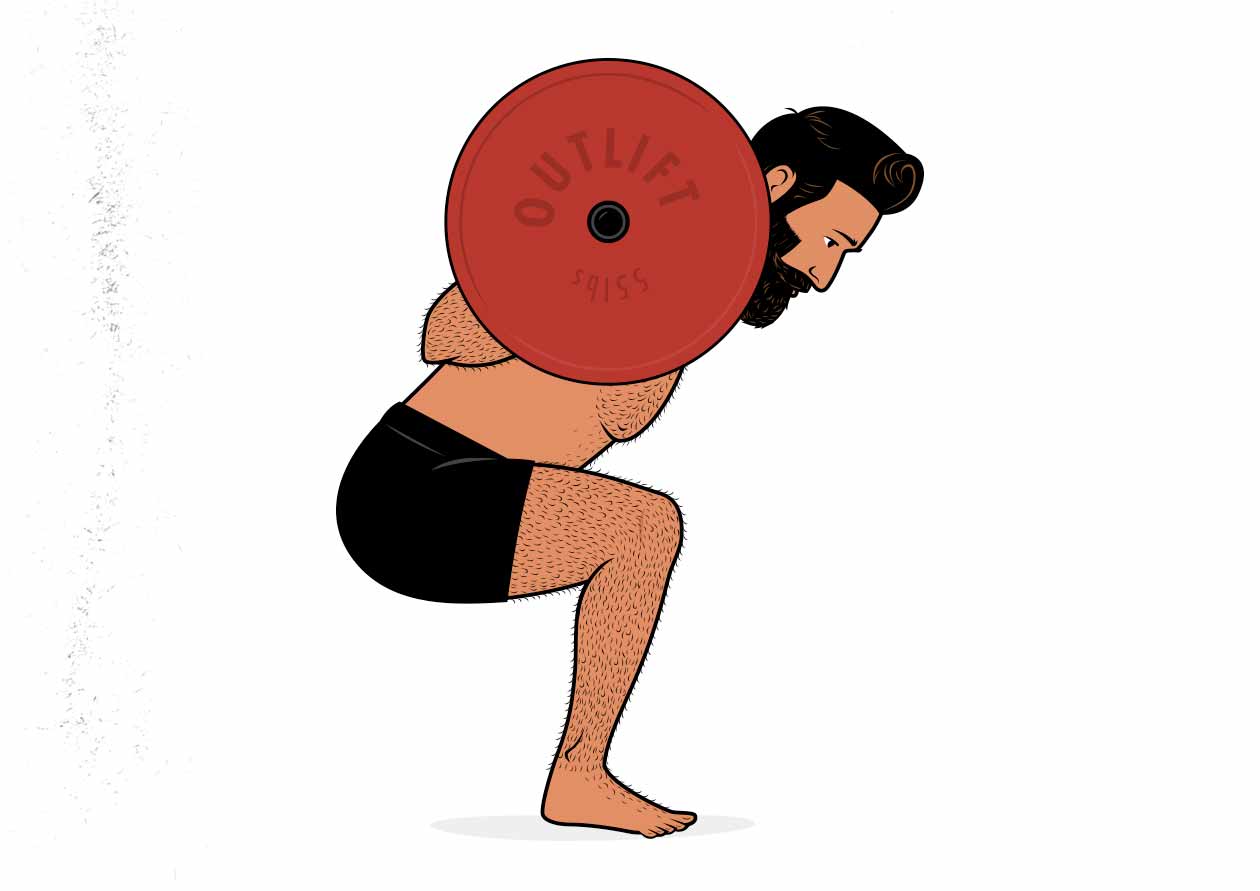
These lifts are quite good at strengthening the hips, thighs, and lower back, which is incredibly important for powerlifting and a number of sports, but they aren’t necessarily good for building overall muscle mass. That’s a problem for two reasons:
- Most people want bigger muscles because big muscles look good.
- Building bigger muscles makes you stronger.
For instance, the low-bar squat is chosen because it makes squatting easier on the lower back, cuts the range of motion, and shifts more load to your hips. All of that is great for improving your squat 1-rep max, but none of it is good for building muscle or getting stronger overall.
For another example, the power clean is designed to take a strong muscle and train it to contract more explosively. This explosive style of training is important for athletes, but it’s one of the worst styles of lifting for stimulating muscle growth. It’s not designed for that.
The Starting Strength Workouts
These five compound lifts are organized into two workouts, both of which start with the squat:
Workout A
- Squat: 3 sets of 5 repetitions (3×5)
- Bench press: 3 sets of 5 repetitions (3×5)
- Deadlift: 1 set of 5 repetitions (1×5)
Workout B
- Squat: 3 sets of 5 repetitions (3×5)
- Overhead Press: 3 sets of 5 repetitions (3×5)
- Power Clean: 5 sets of 3 repetitions (5×3)
Again, we’re seeing a big emphasis on the lower body. Not only is the squat given twice the training volume of any other lift, with 9 sets per week vs 4.5, but it’s also the first lift of every workout. That means that all of our best energy is going into the squat. No surprise, then, that most of our gains will be in our hips, thighs, and lower back.
The other thing that’s notable about the Starting Strength workouts is that they use a fairly low volume overall. Only three lifts are done each workout, and each lift is done for only 3 sets (on average). This is often used as a criticism for Starting Strength, and a reason for why StrongLifts 5×5 might be better for building muscle. But that’s not necessarily the case. Beginners don’t need a very high training volume to build muscle. In fact, doing fewer sets per exercise can often help them avoid crippling muscle soreness and excessive muscle damage, allowing them to train more rigorously more often.
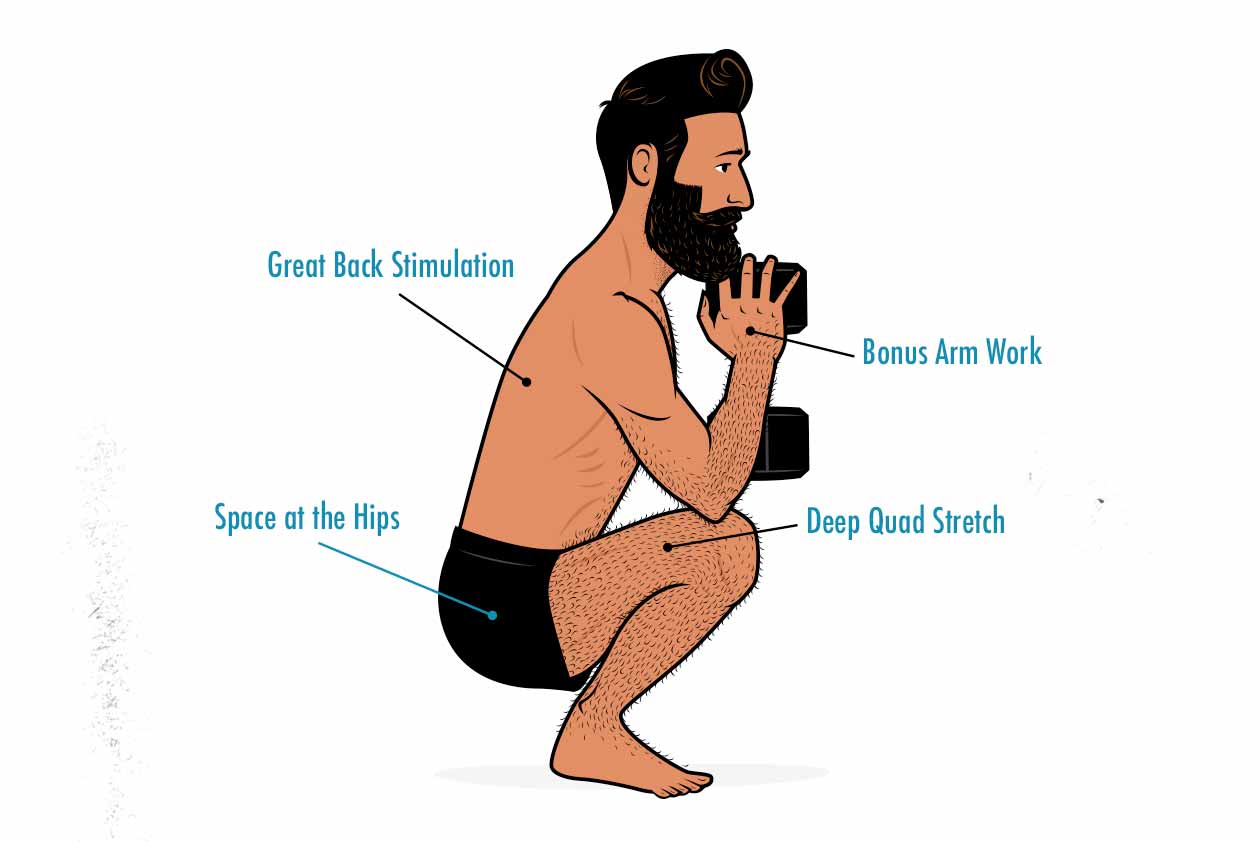
The main downside to these workouts, at least for a beginner, is that they use complex barbell lifts that are often difficult for beginners to learn. Even when beginners are coached in person, it often takes a few weeks to learn the lifts well enough to stimulate much muscle growth with them. That’s why beginner variations and isolation lifts can be so valuable for beginners who are trying to build muscle. But those are absent here.
What is StrongLifts 5×5?
StrongLifts is a beginner strength training program created by a man named Mehdi, who spent many years bodybuilding without success, never managing to build much muscle. When he switched over to a minimalist strength training program, doing 5 sets of 5 repetitions on the big compound lifts, he to gain some muscle size and strength. That inspired him to create the StrongLifts 5×5 site.
We’ve written a full breakdown and review of StrongLifts 5×5, and if you’re thinking about doing the program, I’d recommend reading it. But we’ll give a quick rundown of the program here.
The StrongLifts 5×5 Lifts
Similar to Starting Strength, StrongLifts focuses on getting stronger at five compound lifts:
The only difference is that barbell rows are used instead of power cleans. Mehdi says that this is because “barbell rows are easier to learn and build your upper-body muscles more than power cleans do.” And that’s true. But barbell rows are still quite hard for beginners to learn, requiring quite a lot of hip mobility and lower-back strength. And because they’re so often limited by hip and lower-back strength, they don’t tend to be all that great for helping beginners build bigger upper back muscles. At least not when performed as Mehdi recommends—explosively from the floor.
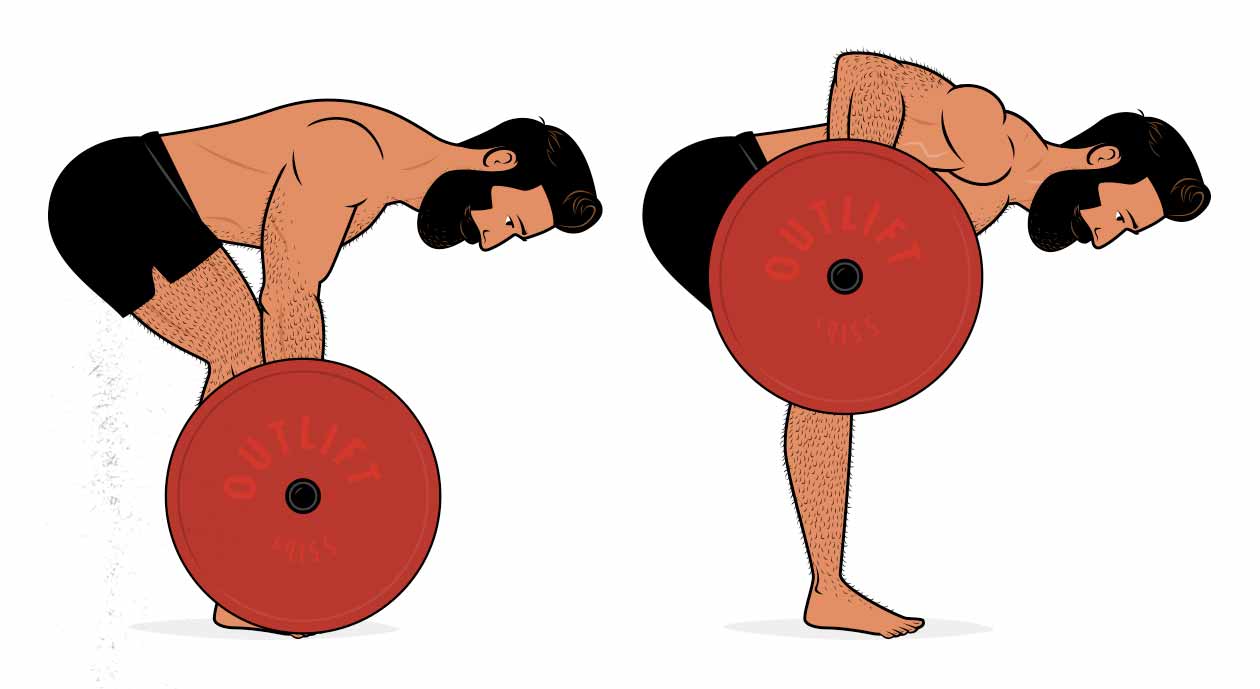
As with Starting Strength, these lifts are rooted in powerlifting, and so they put a ton of emphasis on developing hip and lower back strength, which is key for both the squat and deadlift. But we don’t see much work for the upper back, the arms, or even the chest, let alone for smaller muscles, such as the neck or the abs.
The StrongLifts 5×5 Workouts
These five compound lifts are organized into two workouts, both of which start with the squat:
Workout A
- Squat: 5 sets of 5 repetitions (5×5)
- Bench press: 5 sets of 5 repetitions (5×5)
- Barbell Row: 5 sets of 5 repetitions (5×5)
Workout B
- Squat: 3 sets of 5 repetitions (5×5)
- Overhead Press: 3 sets of 5 repetitions (5×5)
- Deadlift: 1 set of 5 repetitions (1×5)
Just like Starting Strength, we’re seeing a big emphasis on the lower body. There are twice as many sets of squats as any other lift, with 15 sets per week vs 7.5, and it’s the first lift of every workout. This presents even more of an issue than with Starting Strength, as we’re now starting each workout with 5 sets of squats instead of just 3. That means that by the time we get to our secondary lifts, we’re even more fatigued.
While Starting Strength is often criticized for using too little volume, StrongLifts comes under fire for the opposite reason: there are too many sets per exercise. It’s true that doing so many sets on such big lifts can be overwhelming for beginners, often requiring them to spend upwards of an hour in the gym (especially if they take a while to warm up or use longer rest times), and then spending the following days feeling wrecked, especially in their lower backs.
The volume here isn’t that crazy, though. The problem is with the lift selection. Not only are these poor lifts for beginners, especially if they aren’t being trained in person, but instead of doing so many sets on so few lifts, a beginner would be better served by adding in some simpler isolation lifts.
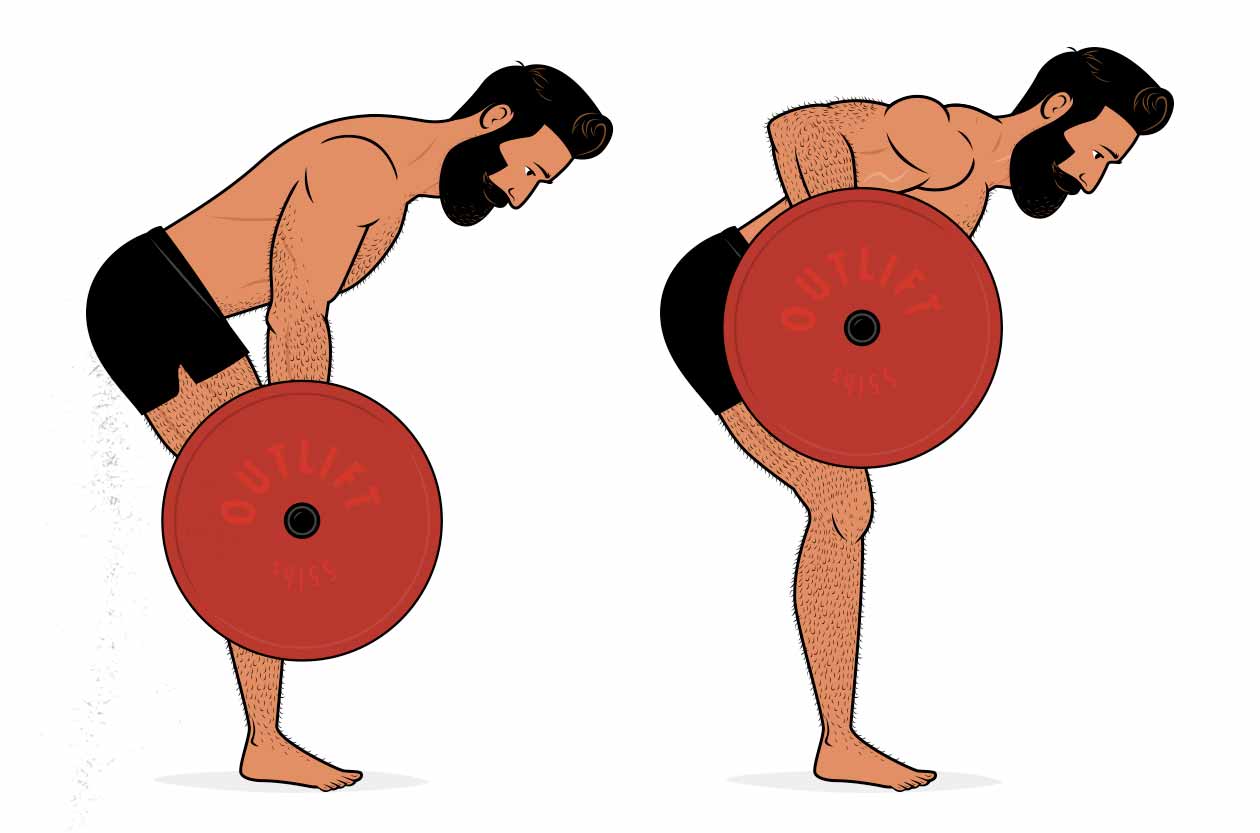
For example, even if a beginner only has access to a barbell—which is perfectly fine—there are better lifts. Instead of doing barbell rows from the floor, where the limiting factor is likely to be the lower back, a beginner would probably have do better with rows from a hinged position, where the limiting factor is more likely to be the upper body pulling muscles—our lats, rhomboids, rear delts, forearms, and so on.
The rep range could also be brought higher. Instead of doing sets of 5 repetitions on the row, where our hips and lower backs will often have trouble stabilizing the weight, limiting the stimulation for our upper bodies, we could do sets of 12–18 reps. Not only is that a better rep range for building muscle (systematic review), it’s also a better rep range for the barbell row specifically, putting more of the emphasis on our pulling muscles.
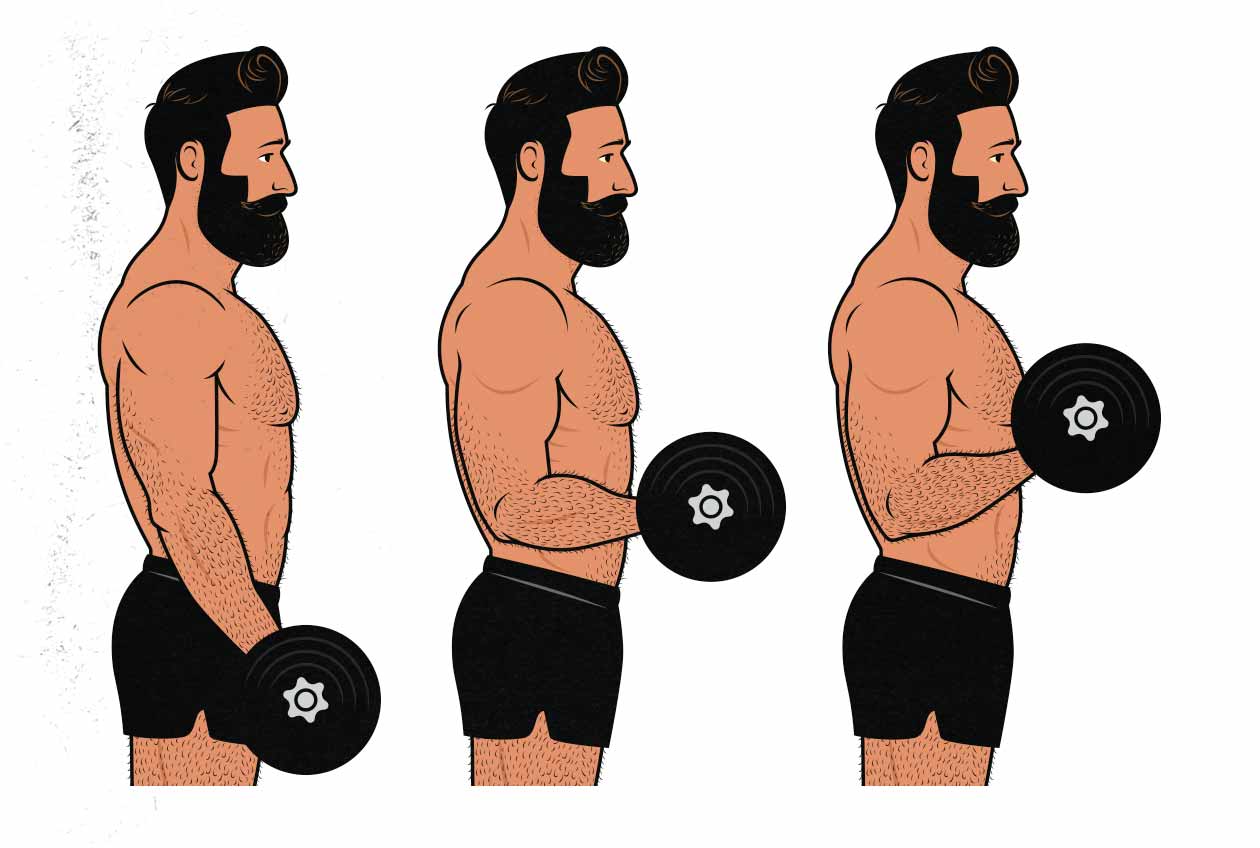
Then, instead of doing 5 sets of barbell rows, a beginner could do just 3 sets, freeing up the time to do a couple sets of biceps curls. 3 sets of 15 reps is enough volume to eke most of the growth out of an exercise, especially if the final set is brought nearly all the way to failure. Then, by adding in the curls, we have some biceps work.
What’s the Difference?
Okay, so, right off the bat, there are a couple notable differences between Starting Strength and StrongLifts 5×5:
- Starting Strength uses 3 sets per exercise, StrongLifts recommends 5.
- Starting Strength has power cleans, StrongLifts has barbell rows.
The other difference is in how the two programs approach progression. Both encourage progressive overload—fighting to add weight to the barbell every workout. But that can’t go on forever. Eventually people run into strength plateaus. At that point, both programs recommend stripping some weight off the bar, working your way back up.
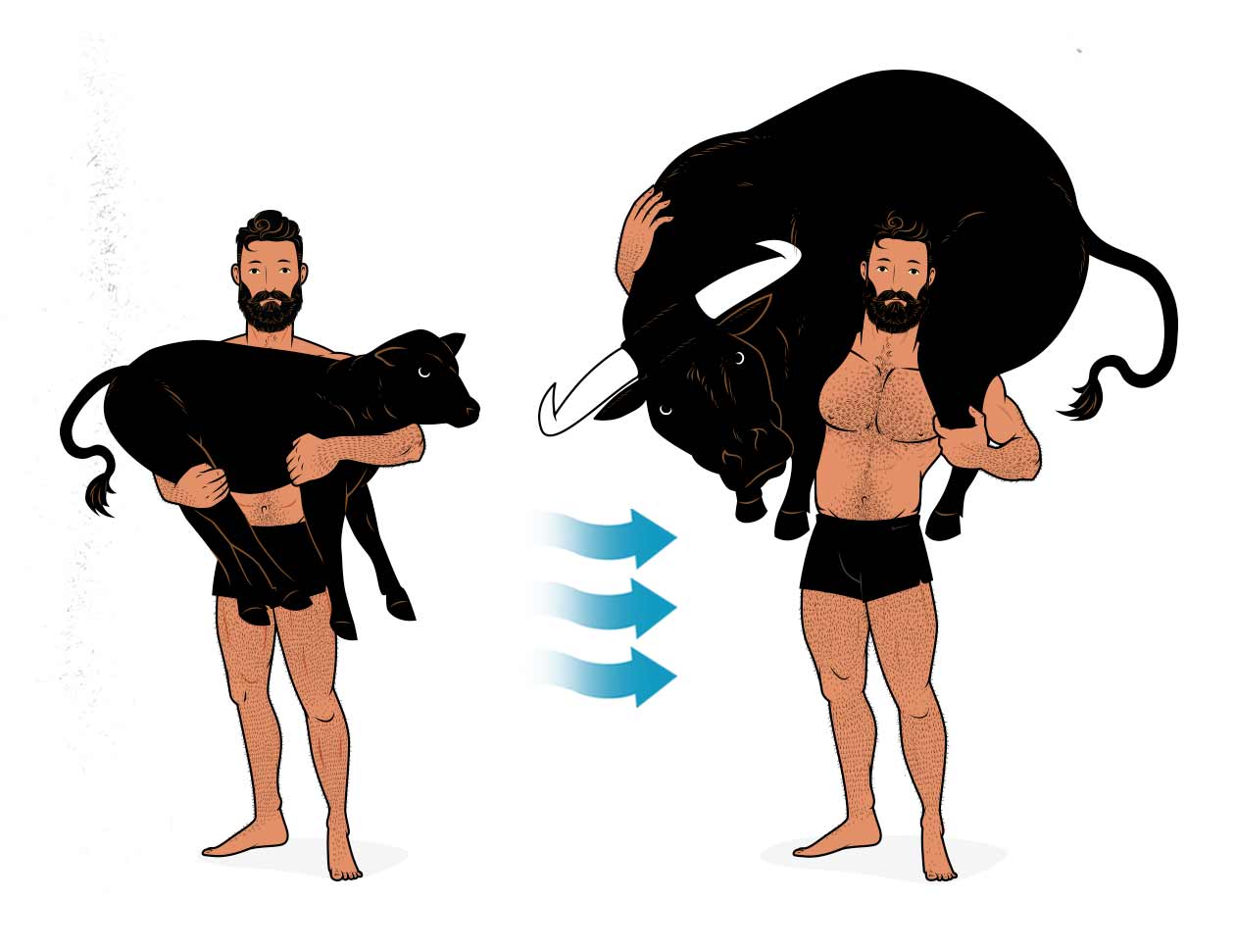
If you remain plateaued, Starting Strength recommends switching to an intermediate workout routine, and that makes sense. StrongLifts, on the other hand, recommends reducing the training volume, doing 3 sets of 5, then 3 sets of 3, then 1 set of 5. That doesn’t make sense, at least not in the longer term. Reducing training volume while increasing the weight is called “peaking.” It allows lifters to fully recover from their workouts, allowing them to lift more weight. But it also doesn’t really stimulate any muscle growth. So what will inevitably happen is people will recover, find that they can lift a bit more weight, and then plateau again.
Which Program is Better?
Which of these approaches is better? It’s hard to say. If you’re an athletic beginner who wants an introduction to powerlifting-style lifting, having a coach run you through Starting Strength might make a lot of sense. Or if you’ve been spinning your wheels in the gym doing random exercises on exercise machines, as Mehdi was, maybe StrongLifts will be an improvement, at least for your lower body.
Both programs share a number of strengths:
- Both are good for improving squat strength. There’s a ton of emphasis on the squat, and it shows in the results. Both programs are famous for helping beginners add a ton of weight to their squat within 6 months.
- Both emphasize progressive overload. One of the most important things when building muscle is to constantly fight to outlift yourself. Write down how much your lifting, and then next workout, try to beat it. That’s how we make progress over time, and both programs are great for that. There are other ways of approaching progressive overload, and these programs eventually stall out, but it’s an effective approach for beginners.
- Both use big compound lifts. Big compound lifts are good for engaging a ton of overall muscle mass, allowing us to train efficiently for overall muscle growth and strength gains. And because these are compound free-weight movements, they tend to transfer quite well to general strength and athleticism.
- Both can be done at home with just a barbell home gym.
- Both are elegant and simple.
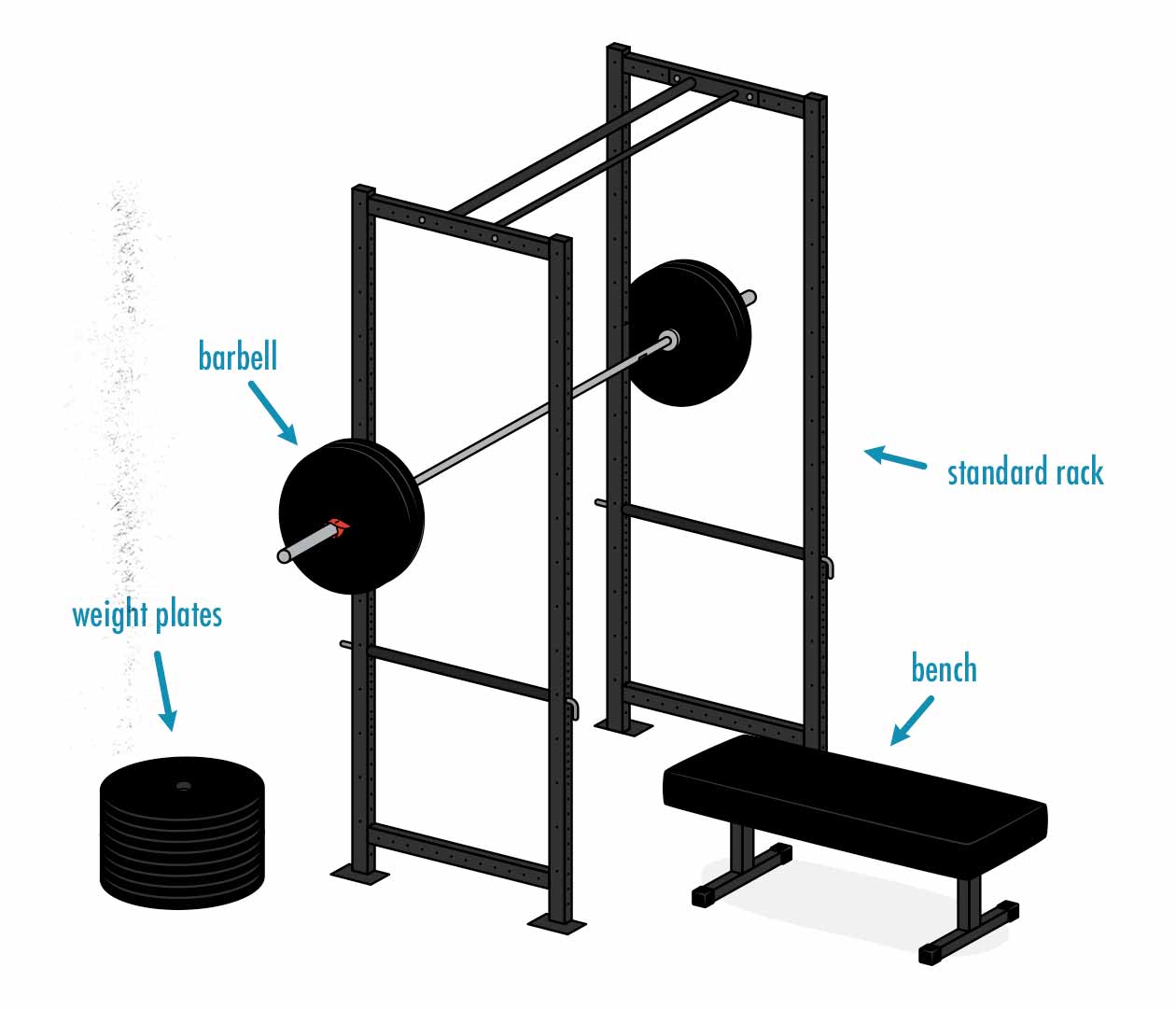
But if you’re a skinny guy trying to build muscle, neither program is very good for that. Both of them share many of the same problems:
- The lifts are too advanced for most beginners, especially if they’re skinny or unathletic, and especially if they’re training by themselves. It’s usually better for beginners to start with simpler compound lifts (such as goblet squats instead of low-bar squats) and to include isolation lifts (such as biceps curls). That way they can build muscle sooner and faster.
- The reps per set are too low to stimulate an optimal amount of muscle growth per set. Doing 5 reps per set is okay for building muscle, but doing 6+ reps is usually a good minimum. Even then, it’s often good to include plenty of sets in the 8–15 rep range.
- Most of the growth will go to the hips and thighs, which isn’t necessarily bad, but may not line up with your goals.
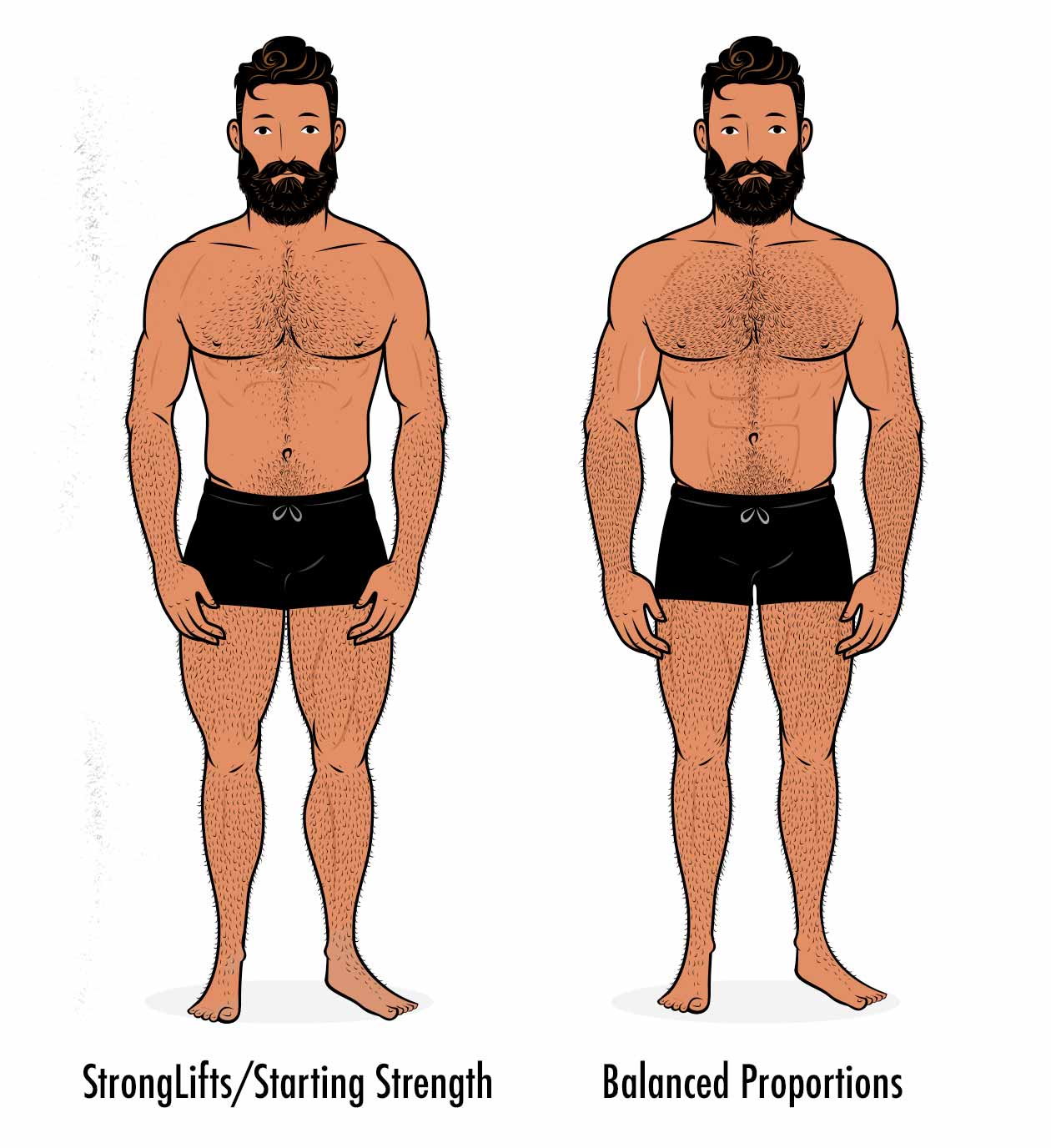
For someone who’s new to lifting weights, doing three sets per exercise is enough to make fairly optimal progress, and it makes Starting Strength much easier to do and much easier to recover from. Mark Rippetoe is also an accomplished powerlifter with decades of experience coaching people, so his method of teaching his lifts and methods tends to be more streamlined. If you had to pick between the two, Starting Strength is probably the better bet.
If you’re trying to build muscle, should you bump the rep range up? Should you replace the power cleans with barbell rows? Should you add extra isolation lifts for your arms and upper back? You could. Mark Rippetoe wouldn’t like it, but your muscles won’t mind. But if the program doesn’t suit you, you may want to do a different program instead.
Will They Help You Build Muscle?
We do a lot of nitpicking. Not because we’re pedants—although we are pedants—but because we think it matters. If you can learn the lifts quicker, you can save yourself weeks of frustration. If you get results sooner, you’ll be less likely to give up. If you can build muscle more easily, you’ll be more likely to stick to your workouts.
If you build a stronger upper body and bigger biceps, you’ll probably be stoked to keep challenging yourself in the gym. If we can lower the injury risk by using better beginner lifts, that means fewer people having to take weeks off for rehab or rest. That’s why we care about things that might seem like minor details.
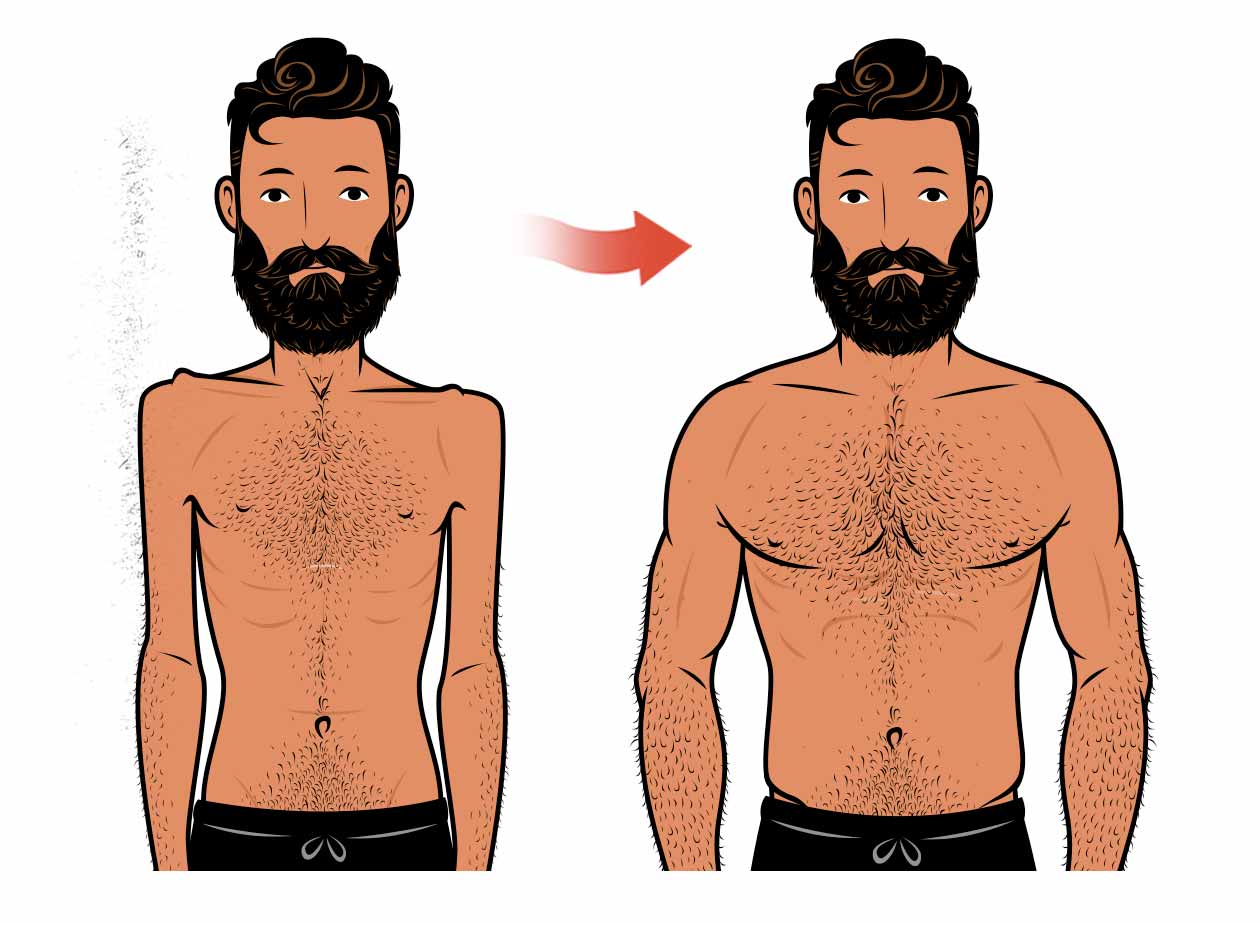
With that said, these programs do work. They will help build muscle and grow stronger.
- Training with free weights, irrespective of the details, is great for helping people grow bigger and stronger. Bodyweight training and exercise machines can help people build muscle, and even resistance bands can work in a pinch. But both barbells and dumbbells are absolutely ideal for building muscle. These are barbell programs. That’s perfect.
- They both encourage progressive overload. And if you’re fighting to add weight to the barbell every workout, you will eventually be pushing yourself hard enough, and you gradually grow bigger and stronger.
- They both use full-body workouts that are done three times per week, and that’s great for stimulating a ton of overall muscle growth with every workout. That’s great.
If you do the Starting Strength or StrongLifts workouts, eat enough protein, eat enough calories to gain weight, and get decent sleep, you will grow. For example, here’s one of our members who did our Bony to Beastly Bulking Program:
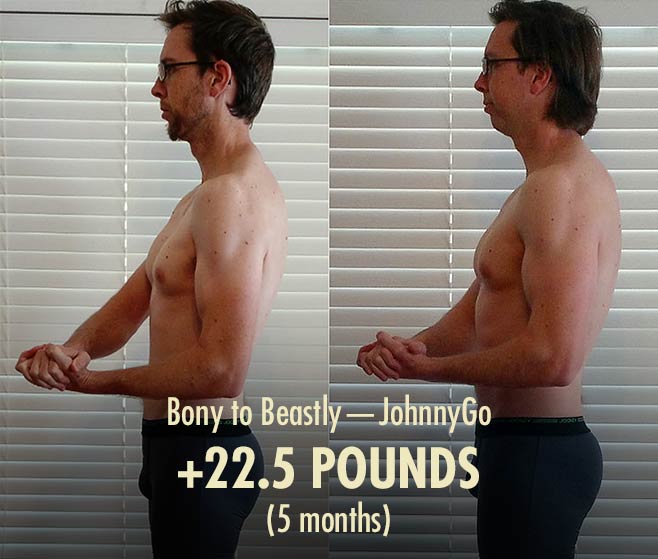
In that “before” photo, he already looks pretty good! And that’s because he started by training the big compound barbell lifts. He wasn’t quite where he wanted to be, but he was perfectly fit and healthy, he was in the habit of lifting weights, and he’d already developed quite a bit of strength. From there, it was fairly straightforward to switch to a more balanced program and blow up his biceps, upper back, chest, and shoulders (along with his lower body, of course).
So if you’re wondering if you should do Starting Strength or StrongLifts 5×5 or some other weight training program, the answer is yes. Which one you pick is up to you, and some muscle-building programs are certainly better than others, but all of them are infinitely better than never getting started at all.
Let’s put it this way. Fast forward 6 months, and we have a guy who’s a bit bummed because it took him a couple of months before he saw results, at which point he noticed that his hips had grown faster than his upper body. Is that his dream? Maybe not. But it’s a much better situation to be in than the guy who still hasn’t started lifting weights.



I did stronglifts 5×5 for one year. Squat and deadlift went up, the rest not so much. Overall I did not gain any visible muscle mass, but I was an intermediate when I started. Enjoyed the minimalism but after a while I started to wonder if that was a smart thing to do related to my goals: squatting heavy every time…
After a year and few failed attempts to add weight to the bar I tried the 3×5 and 3×3 peaking to blast through, but it did not work. I just felt sorer in my joints.
I hear ya, Tomas. I really appreciate you sharing. We get a lot of similar stories from guys coming into our programs from StrongLifts (and Starting Strength).
You’re not supposed to do a beginner routine for a year. Dunno why you would waste your time like that bro.
I don’t understand. Why do you say that?
Hey Thomas!
I’m not an expert but have been re-reading the info SL 5×5. I believe what Josh is referring to – after about a year and deloading then 3×5 & 1×5, the SL recommended progression would be to do Madcow. I’m just quoting section 3 of the SL manual …
Anyways, all the best!
Hi Shane, for beginner level programs, I don’t think that power cleans or bent over barbell rows are a wise choice.
Most people struggle with basic hip hinge pattern and can’t do deadlifts or its variations properly. Barbell rows and power clean are quite advanced and probably risky choices in such cases.
Chinups and pullups make a lot more sense in terms of simplicity, muscle engagement, overloading, and upper body emphasis.Chinups in fact activate / engage more muscle directly as compared to standing overhead press and allow for more weight to be lifted and faster progression than The Press that is notorious for slow progress.
I have nothing against the press, it is my favorite upper body pressing movement, but still, I think the chinup should be included in the big-4 of powerlifting lifts in place of the press. Especially when benching is already in the list, the press is just another redundant pressing move in the list.
Powerlifting community view them only as assistance lift and undermine its importance but it is a huge mistake.
That puts these programs in a bit of a awkward spot. I enjoyed Stronglifts (for a while ) but I was an intermediate already. Was a bit disappointed when it came to blast through plateau
Yeah, that idea of reducing volume to break through a plateau doesn’t really make sense. It confuses peaking with progress. Lowering volume and increasing intensity prepared someone to lift heavy weights by giving them greater recovery, but it’s worse for building muscle than sets of 5+ reps. Might help people lift heavier for a few weeks, but then the plateau after that will just be all the more severe (since no real muscle growth has taken place).
Hey Farhan, I agree that the chin-up is often a better lift than the barbell row, although to be fair, if a beginner is lifting with just a barbell setup, there’s nothing all to wrong with doing rows, I’d just do them in a higher rep range and from a Romanian deadlift position, not from the floor. That way there’s less emphasis on the lower back.
I agree that the chin-up is one of the best lifts for developing general strength, muscle size, and aesthetics, but that’s not what powerlifting is about. Powerlifters don’t prioritize chin-ups because it isn’t a part of their sport. No matter how strong they get at chin-ups, it won’t do much to help their squat, bench press, or deadlift. The barbell row, on the other hand, by strengthening the hips and spinal erectors, works well to strengthen the deadlift (and to a lesser extent the squat). Since these programs are loosely rooted in powerlifting, I think they favour the barbell row because of its connection to the big 3 powerlifting lifts. That’s my guess, anyway.
Yes Shane, agreed.
This is a great site – thanks for sharing all this info!!
I do know people who have done really well with SS or SL – they didn’t bulk a lot but they definitely improved functional strength and wellness. This is just my humble opinion – I am not a certified fitness trainer, so I can’t speak for/advise others.
But I agree, going to the gym for the first time and doing SS/SL could be too advanced for a lot of people – if they haven’t had a sports/gym background AND they don’t get a coach.
Coaching does cost a lot more, but for a lot of people, they could move a lot faster if they get good coaching – I never got a coach, but I took 8 years to learn to squat decently well 🙂 That being said, finding a good coach can sometimes be challenging.
While I personally enjoyed SL, I also had been playing sports and lifting for a long time with machines and dumbbells. I just started SL again, and can feel the difference between compound BB lifts and lighter KB lifting.
Without a thorough study of the form for all the compound lifts, it could be potentially a big issue, for anyone but especially beginners. I personally got somewhat injured by deadlifting heavy than playing soccer the next day. Definitely not how you’re supposed to rest after a strong lift 🙂
If I was going advise myself in 2010, I would recommend something like this as a bit of a variation on SS and/or SL:
Warm-up: KB swings (1&2 arm) then maybe => hyperextensions, shadow boxing with light weights, biking 5-10 minutes, foam roller
A:
Bench (BB or DB)
Row (Pendlay or DB 1 or 2 arms)
Squat
Dips (also helps stretch after squatting)
B:
OHP/Arnold Press/Push press
Power Clean
Maybe some lighter squats
Deadlift
Ring pullups/chinups (also helps stretching after DL)
Another thing that a lot of gym workout routines don’t explain really well for sports lovers – how to program into sports into a workout schedule. I never really found a great way to do both, mostly because it’s extra hard to do both.
I probably would skip the heavy squats and DL the day of and the day before (maybe even 2 days before) of a sports practice/event (at least for soccer), etc but still do a lighter versions of the upper body.
Also, for a more chill version of SL/SS, I would add weights (progressive overload) maybe for 1-2 weeks and then for 1 week do a lighter workout to slow down the progressive overload.
All the best!